Superhot PC Review: A Slow-Motion Ballet of Murder and Mayhem
Time moves when you move, but will it move you?
This article first appeared on USgamer, a partner publication of VG247. Some content, such as this article, has been migrated to VG247 for posterity after USgamer's closure - but it has not been edited or further vetted by the VG247 team.
Superhot is built around a strong premise: time moves when you move. That's actually not entirely correct though. Time moves slowly whenever you're in game and speeds up to real-time when you decide to take action. It shares the same framework as a first person shooter, but the addition of slwo-motion turns the game into a puzzler instead.
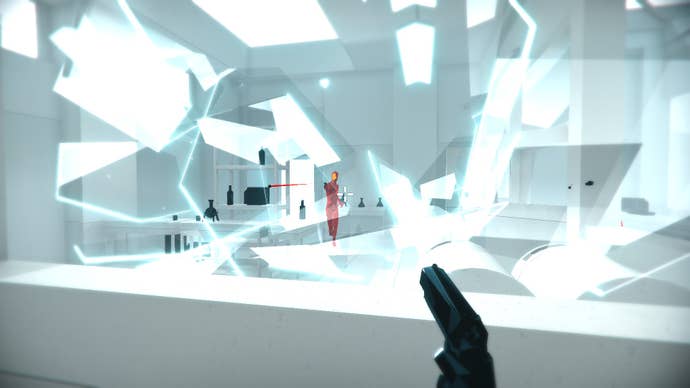
Imagine this: you're trapped in an elevator with three men holding pistols in your direction. A single shot or hit kills you. You dash forward, dead. You dash or right too slowly, dead. Then you dash left, behind one of the men and he takes the first two bullets for you. You grab his pistol, continuing to dodge left, shooting the guy on the far right. Reloading takes time you don't have, so you throw the loaded pistol at the last guy, grab his pistol in mid-air, shoot him with it and then dispatch the guys that appear when the elevator door opens.
That's Superhot. It's a game of trial and error.
What helps the game is it's simplicity. Visually, the game is all white, black, and red. Gradients of white for the world itself, red for enemies, whom you can only kill, and black for objects you can pick up. Some of these objects are thrown, like bottles, cups, and billiard balls, while others are of the weapon variety: pistols, shotguns, automatic rifles, baseball bats, and the occasional katana. It's a lot like Hotline Miami from a different perspective. There's only a few interactions with the world: move, jump, and kill. That gives you a laser sharp focus when moving around the space you're given and dispatching your targets.
That focus and relying on some hard rules is what makes Superhot work. Glass windows have to be broken once before bullets will pass through them. Bullets that hit flying objects stop. This allows you to make your plans: let them shoot you through that window first, then take your shot. Is your gun out of ammo? Throw it to stun your enemy or to take a bullet for you in mid-air. And guns can't be reloaded once the clip is finished; you just have to pick up another weapon.

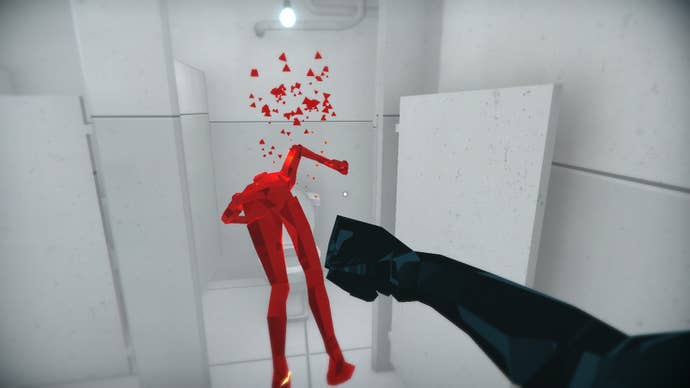
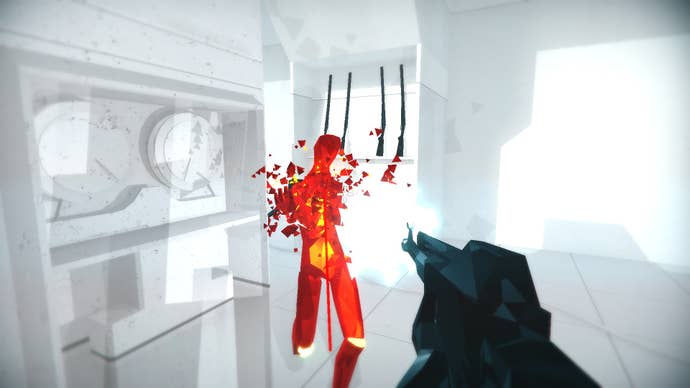
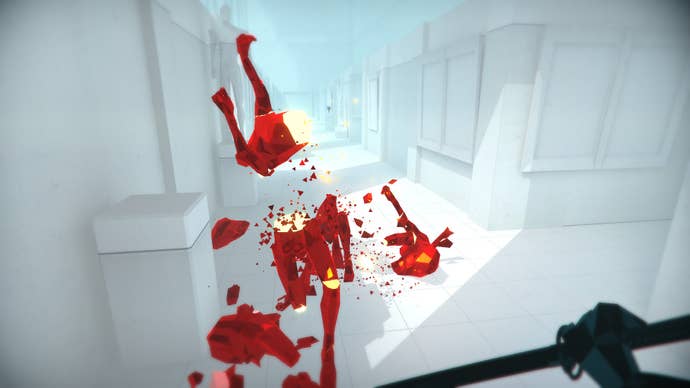
Across 30-some levels, Superhot will throw you into situations inspired by your favorite action films. Expect to fight it out in bars and alleyways. You'll leap down an ornate staircase with katana in hand, like in the Matrix Reloaded. Bust through a metal detector and light up a meeting of armed executives. Perhaps you're tearing down a hallway, reminiscent of Oldboy's famous fight scene. Finishing a stage offers you a replay of your accomplishments in real-time alongside the pulse-pounding voice screaming "Super HOT" over and over again until you move on. Every scenario gives you brief level-name prompts, like "Wrong Turn" or "Inside Job" to set the stage, but otherwise the levels aren't connected.
Well, until they are. Superhot has an actual plot, involving you as a hacker and user of "superhot.exe". As you play the game, you catch the eye of the shadowy force controlling Superhot. This group wants you to stop playing, outright bullying you at times to simply close the game completely, but you're driven forward. Yes, that's because you're playing Superhot, but the game presents it like some insatiable curiosity. You, the player character, can't stop from clicking on Superhot one more time.
At some point, it becomes clear that Superhot is more than just a game. The game starts to get into this whole meta-narrative about the fact that you the player have to obey the bold prompts given to you in each scene. You have to do what the omnipotent voice says because the game doesn't move forward otherwise. And those folks you're killing: is this just a game or are they real people like yourself? Once the game properly ends and the credits roll, you'll still be left with questions.
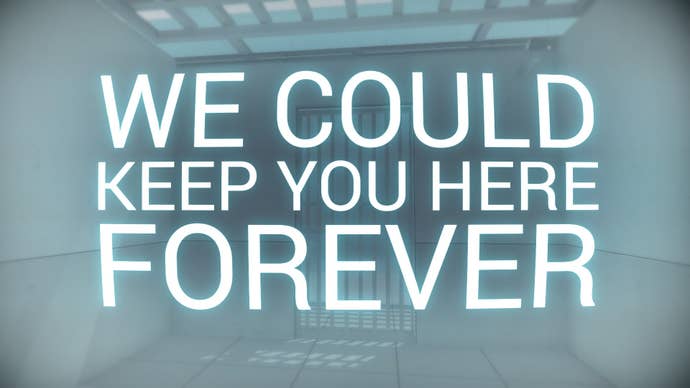
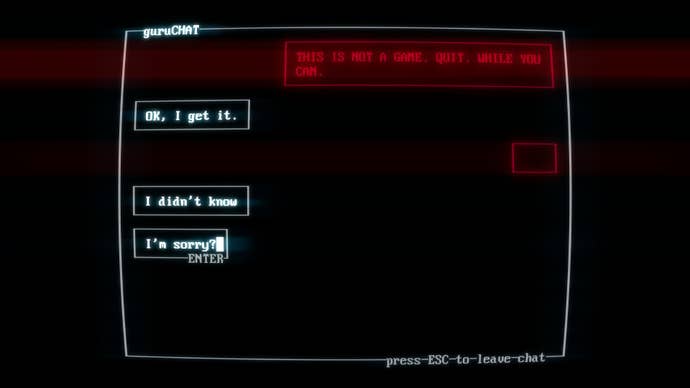
You'll also be left with a number challenges, taking the levels you just played and adding new limitations. Perhaps you're only allowed to have one gun, or you have to complete the level within a certain time limit. Maybe you're limited to a single bullet. There's also the Endless Mode that throws enemies at you until you die. You'll polish off the main game in 3-4 hours, but the challenges extend the life of the game considerably.
There's nothing else out there like Superhot. It's a fun and stylish twist on the idea of the first-person shooter, backed by an odd techno-thriller narrative that blindsides you out of nowhere. That feeling when you're seeing your ballet of murder in real-time can't be beat. When I first played Superhot, I didn't know the full shape of what it would become, but I'm definitely glad that I played the final result.
InterfaceThe faux DOS ASCII art menus really sell the game's narrative.
Lasting AppealOnce you've finished the rather quick campaign, there's still the challenge modes to tackle.
VisualsThe minimalist visuals will keep you focused on why you're playing. Kill everyone!
ConclusionIt might look like a shooter, but Superhot's unique game mechanic - Time moves when you move - means the game plays out more like a puzzle. You'll punch, slice, and shoot your way through waves of red shapes and feel awesome while doing it. It's over pretty quick, but once you're done, there's still a whole host of challenge levels to tackle.









